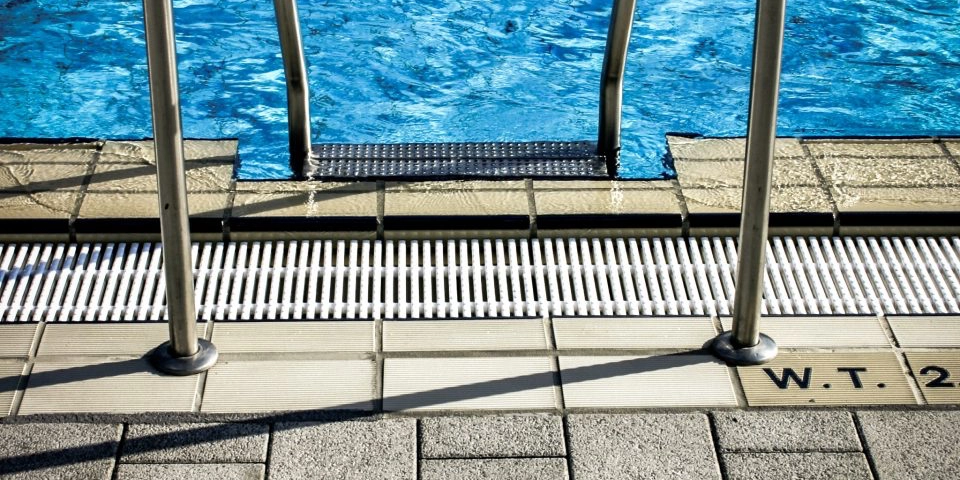
As homeowner association annual budget items go, those related to the association’s swimming pool, when totaled, are typically the largest expense category. Individual budget categories, such as pool chemicals, pool furniture and lifeguards can add up substantially. While the pool management contractor expense is often thought off, obscure other expenditures may not be so evident. Expenses such as the additional liability insurance cost and the capital reserves that must be maintained make swimming pools a significant financial obligation.
The operating system of a swimming pool is based on the circulation of the water. The usage, repair, and replacement of the components in this system is a continual process. The board of directors is faced with understanding and managing this major association annual expense.
Swimming pool water must circulate through a filtering system to remove common pollutants.
The pollutants or contaminants introduced by swimmers themselves and are typically composed of human sweat, skin, body oils, makeup, and lotions. Natural contaminants are usually composed of leaves, insects, and micro-organisms such as bacteria and algae. Other natural contaminants can be elements such as calcium, nitrogen, and numerous metals.
Pool circulation works by water flowing into the filtering system through two features of a swimming pool, the main drains, and the skimmers. Newer pools will have two or more main drains located at the bottom of the deep end, and older pools may only have one main drain. Skimmers are located around the top or water surface of the pool. Skimmers pull water off the top of the pool, while main drains pull water from the bottom.
Note: Older swimming pools many times do not have two main drains. Newer swimming pools have two or more for safety reasons. Multiple main drains split or defuse the suction in the event something or someone blocks one of the drains. See the Virginia Graeme Baker Pool and Spa Safety Act (VGBA) of 2007.
-Skimmers are built into the sides of the pool. They work by pulling water into the system with a skimming action that also draws in large contaminants. The purpose here is to prevent these contaminants from sinking to the bottom of the pool. Within the skimmer is a basket that traps these large contaminants before they reach the pool pump. Skimmers are used for the disbursement of chlorine. The Association of Pool and Spa Professionals recommend one skimmer for every 400 square feet of pool surface.
-Check valves are installed to prevent water from flowing backwards into the system when the pump is not operating. This prevents gravity draining of water in the filter, pump, and pipes. Their purpose is to ensure water flows in only one direction.
-The pump is the heart of the of the swimming pool’s circulation system. The force of the pump pulls water through the main drains and skimmers and then pushes the water on through the filter and, if applicable, the heater and chemical feeder, back into the pool through the main returns. A swimming pool pump generally has three components: motor, impeller, and contaminant trap. A spinning impeller is what pulls water in and out of the pump. The pump contaminant trap is for catching what the skinner trap failed to stop. Determining the size/power of a pump, measured in horsepower, is dependent on many factors such as pool size, shape, etc. As a rule, a pump should be large enough to filter all the water in a pool in eight hours.
-The filter cleans fine contaminants from the pool water. A common misconception is that the pump and filter are one in the same, but they are entirely different mechanisms. For most homeowner associations there are two primary filtration systems, sand filters, and D.E. (diatomaceous earth) filters.
-A heater is an optional feature that can be found in pool circulation systems. The heat exchanger within the heater transfers heat generated by the burners to the pool water. There are many different types of pool heaters powered by natural gas, propane, electric, and solar. The high operational expense tend to lead to very few homeowner associations utilizing heaters.
-Automatic chlorinators or chemical feeders are optional devices that are found on swimming pool circulation systems. These devices automatically deposit chlorine into the circulation system. There are two types of chlorinators in commercial applications, a manual chlorinator and a computerized chlorinator. Chemical feeders can be loaded with chlorine for an extended period and set accordingly. By chemical feeders being placed after the pool filter, the filter is less affected by chlorine corrosion.
-Return jets are what push the water back into the swimming pool after it has been through the circulation system. Return jets also assist in the circulation process within the pool which allows the skimmers to work more effectively at removing contaminants. WDMC
William Douglas Management, providing excellent management services to HOAs and condominium associations since 1980.
Copyright 2019 William Douglas Management, Inc.


